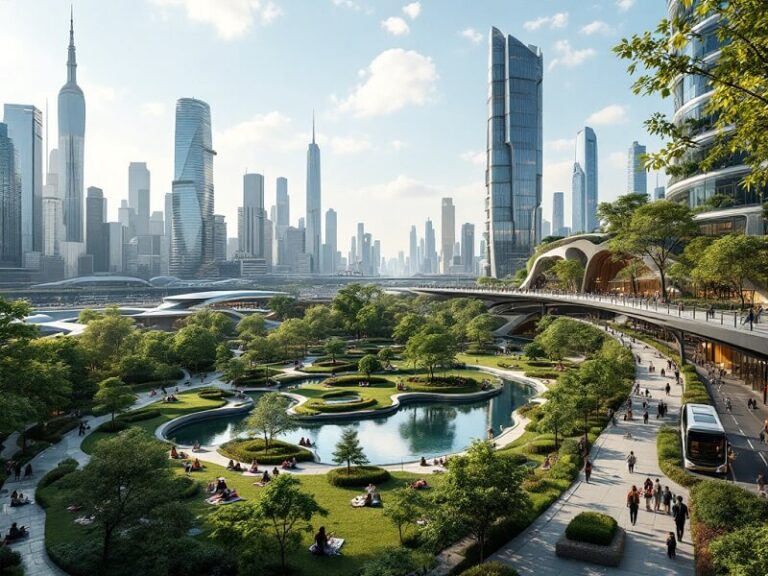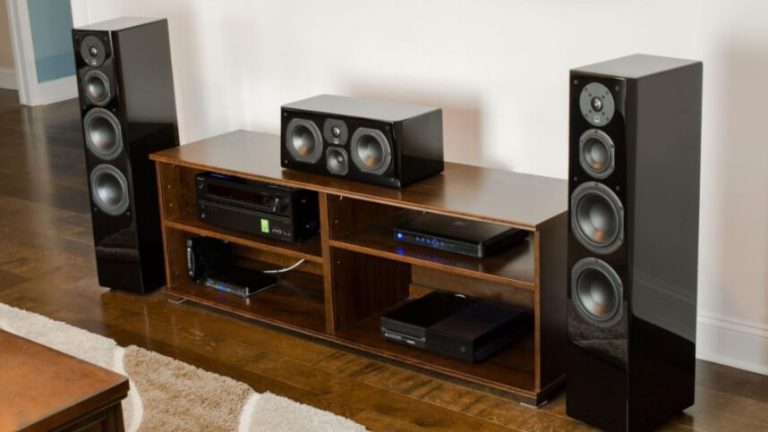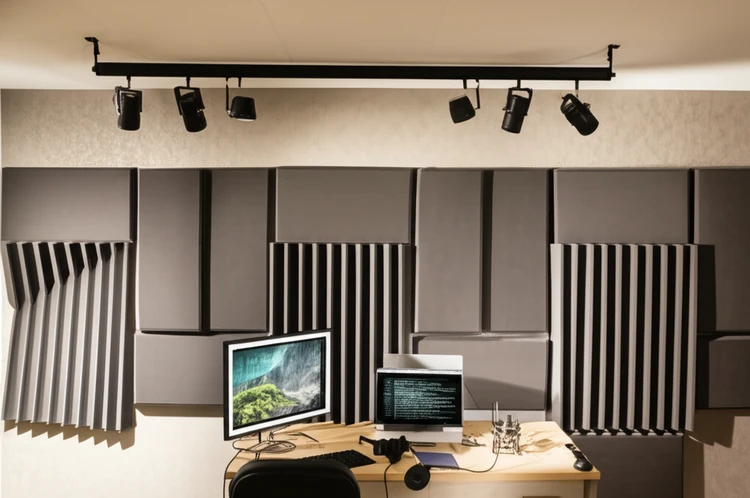
The relentless din of city life—the cacophony of traffic, construction, and human activity—is more than just an annoyance. The World Health Organization estimates that at least 1 million healthy life years are lost annually in Western European countries alone due to environmental noise, a significant portion stemming from urban areas. Noise pollution in urban areas dramatically impacts our health, well-being, and even the local ecosystem.
Urban areas, the vibrant centers of human activity, face a growing challenge: urban noise pollution. From the constant drone of traffic to the clatter of construction sites and the hubbub of crowded public spaces, city noise significantly impacts the health and well-being of millions. Studies reveal that prolonged exposure to high noise levels can lead to stress, sleep disturbances, and even long-term health issues like hypertension, cardiovascular diseases, and cognitive impairment in children.
Addressing this issue is crucial not just for comfort but for public health and the overall quality of urban life.
By employing innovative strategies and advanced technologies, cities can mitigate noise pollution and create more livable environments. This exploration of techniques to reduce noise pollution in urban areas aims to provide a comprehensive understanding of the problem and offer practical solutions for a quieter urban future.
What is Noise Pollution in Urban Areas?
Urban noise pollution is defined as excessive and unwanted sound in city environments that disrupts the activity or balance of human or animal life. This typically involves sounds exceeding 70 decibels (dB), a level comparable to a vacuum cleaner or busy traffic.
Prolonged exposure to noise levels above 85 dB, equivalent to a loud motorcycle or a food blender, can lead to permanent hearing damage. Unlike natural sounds, urban noise often contains a complex mix of frequencies, making it more jarring and disruptive to human perception and health. Common sources include internal combustion engine (ICE) vehicles, industrial activities, construction, entertainment venues, and densely populated spaces.
The Impact of Noise Pollution on Urban Living
Noise pollution affects cities in numerous ways, impacting residents’ health, the environment, and the local economy:
- Health Impacts: The World Health Organization has linked prolonged exposure to high noise levels to numerous health problems.
Studies have shown a strong correlation between traffic noise and an increased risk of cardiovascular disease, with a reported 4% increase in risk for every 10 dB increase in noise level. Noise pollution can also cause hearing loss, tinnitus, stress, sleep disorders, anxiety, and depression. Children’s cognitive development can also be negatively affected by chronic exposure to noise.
- Environmental Effects: Urban noise pollution significantly disrupts wildlife.
Birds in noisy urban environments have altered songs and reduced breeding success. Noise can also interfere with animal communication, foraging, and predator-prey interactions, impacting urban ecosystems.
- Economic Consequences: Studies have demonstrated a link between noise pollution and decreased property values in affected areas. Businesses in noisy locations may struggle to attract and retain employees and customers due to the unpleasant environment.
Reduced productivity and increased healthcare costs associated with noise-related health issues further contribute to the economic burden of noise pollution.
Addressing these impacts requires implementing targeted strategies for noise control and employing effective techniques to reduce noise pollution in urban areas.
Top Techniques to Minimize Noise Pollution in Cities
Sound Barriers and Noise Walls
Sound barriers are physical structures designed to mitigate noise pollution, particularly from transportation sources like highways and railways. They work by absorbing and deflecting sound waves, creating a quieter zone behind the barrier. Effective designs consider factors like height, material, and placement for optimal noise reduction.
- Innovative Designs: Green walls, incorporating vegetation on barrier surfaces, enhance noise reduction while also improving air quality and aesthetics.
Earth berms, constructed from soil and vegetation, offer a natural and visually appealing alternative to traditional walls.
- Materials: Concrete, metal, wood, and transparent materials like acrylic are commonly used. The choice depends on the specific noise frequencies, aesthetic considerations, and budget.
- Effectiveness: Sound barriers can typically reduce noise levels by 5 to 10 dB, a significant reduction in perceived loudness.
Urban Planning Strategies
Strategic urban planning plays a vital role in minimizing noise pollution from the outset.
- Zoning Laws: Implementing strict zoning regulations can separate noise-generating activities, like industrial zones and entertainment venues, from residential areas, minimizing noise intrusion.
- Green Spaces: Parks, green roofs, and tree-lined streets act as natural sound buffers, absorbing and scattering sound waves. They also improve air quality, reduce the urban heat island effect, and provide aesthetic and recreational benefits.
- Transit-Oriented Development: Prioritizing public transportation, cycling, and pedestrian infrastructure reduces reliance on private vehicles, significantly decreasing traffic noise and promoting sustainable urban mobility.
Noise-Reducing Building Materials
Modern building materials and techniques can effectively limit sound transmission within and between buildings, creating quieter indoor environments.
- Acoustic Insulation: Materials like fiberglass, mineral wool, and cellulose insulation effectively absorb sound within walls, floors, and ceilings.
Dense materials, such as mass-loaded vinyl, can further enhance sound blocking.
- Soundproof Windows: Double or triple-glazed windows with laminated glass and air gaps significantly reduce external noise infiltration. Proper sealing and installation are critical for optimal performance.
- Eco-Friendly Options: Sustainable materials like sheep’s wool, recycled denim insulation, and bamboo offer effective soundproofing solutions with a lower environmental impact.
Quieter Infrastructure Design
Designing infrastructure with noise reduction in mind is crucial for mitigating noise at the source.
- Silent Pavements: Porous asphalt and rubberized asphalt absorb tire noise, reducing traffic noise levels. These materials also improve water drainage and reduce road surface temperatures.
- Anti-Noise Concrete: Textured concrete surfaces and concrete containing recycled materials can effectively scatter and absorb sound waves, reducing noise reflection and propagation.
- Rail Design Innovations: Rail dampeners, continuous welded rails, and ballast mats minimize vibrations and noise generated by train movement.
Regular wheel and track maintenance further reduces noise levels.
Policy and Regulation Enforcement
Effective noise control requires strong policies, regulations, and their consistent enforcement.
- Noise Ordinances: Local governments can establish and enforce noise level limits for various activities, protecting residents from excessive noise exposure.
- Permits for Construction Activities: Requiring permits and restricting noisy construction operations to specific times of day minimizes disruption to surrounding communities.
- Noise Monitoring and Mapping: Implementing noise monitoring systems and creating noise maps help identify noise hotspots and prioritize mitigation efforts.
Public Awareness and Community Initiatives
Raising public awareness about noise pollution and engaging communities in noise reduction efforts are essential for achieving lasting change.
- Educational Campaigns: Public service announcements, workshops, and community events can educate residents about the impact of noise pollution and promote quieter behaviors.
- Quiet Zones and Noise-Free Areas: Designating quiet zones near hospitals, schools, and residential areas limits noise levels and creates peaceful spaces within the city.
- Community-Based Noise Monitoring: Citizen science initiatives can involve residents in monitoring noise levels and collecting data, empowering communities to participate in noise management.
Technological Innovations
Emerging technologies offer promising solutions for advanced noise control and monitoring.
FAQ
What are the main sources of noise pollution in cities?
The primary sources of noise pollution in cities include traffic, construction activities, industrial operations, entertainment venues, and densely populated areas. These noises often exceed safe levels for human health and contribute to various environmental and health problems.
How do green spaces help reduce noise pollution?
Trees, shrubs, and other vegetation in parks and green areas act as natural sound absorbers.
Their leaves, branches, and ground cover disrupt the path of sound waves, scattering and absorbing their energy, thereby reducing noise levels. The presence of vegetation also helps to diffract sound, bending sound waves around obstacles and reducing their intensity.
What can individuals do to reduce noise pollution in their homes?
Individuals can take several steps to reduce noise pollution in their homes, including using sound-absorbing materials like carpets and curtains, installing soundproof windows and doors, sealing air gaps around windows and doors, and strategically placing bookshelves and furniture to absorb sound. Using noise-canceling headphones and appliances with lower noise ratings can also help to create a quieter indoor environment.
Conclusion
Combating noise pollution in urban environments necessitates a comprehensive and multi-pronged approach.
Effective techniques to reduce noise pollution in urban areas require a combination of innovative technologies, strategic urban planning, robust policy implementation, community engagement, and individual actions. By embracing sound barriers, designing quieter infrastructure, promoting public awareness, and leveraging emerging technologies, cities can create significantly healthier and more peaceful environments for their residents. The collaboration of residents, policymakers, and urban planners is essential for enacting meaningful changes that enhance the quality of urban life.
By working together and prioritizing noise reduction strategies, we can pave the way for quieter, healthier, and more vibrant cities for future generations.






